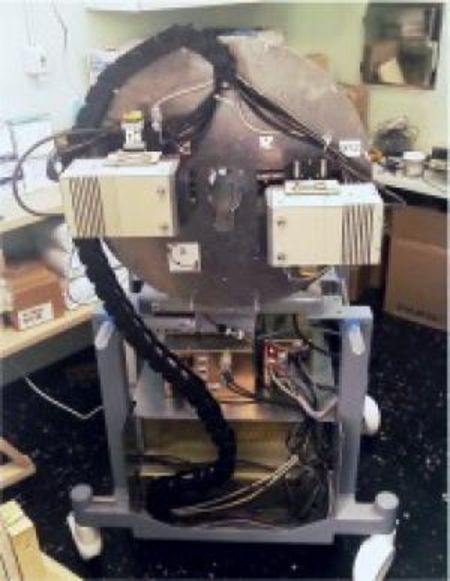According to a new study published in the American Journal of Roentgenology (AJR) in January 2012, Molecular Breast Imaging (MBI), also known as Breast-Specific Gamma Imaging (BSGI), can detect cancers missed by the two most common breast imaging studies, mammography and ultrasound. BSGI had the highest overall sensitivity (91%) for breast cancer detection, significantly higher than that of mammography and ultrasound, 74% and 84% respectively. In addition, BSGI was more effective than ultrasound in contributing to patient management when the results of these studies changed the diagnosis provided by mammography. In this multi-center study of 1042 patients at four institutions, BSGI had an outstanding overall sensitivity of 91% and negative predictive value (NPV) of 96%. The BSGI procedures were conducted with a high-resolution gamma camera, the Dilon 6800®. For patients who had adjunctive imaging procedures with results discordant from those for mammography, BSGI provided higher diagnostic accuracy than ultrasound (77% vs 35%). The group of patients with indeterminate mammograms (BI-RADS 0) received the greatest benefit from use of BSGI. For the BI-RADS 0 patients, BSGI was significantly more likely to contribute to patient management than ultrasound, it was less likely to be negative in cancerous lesions and was less likely to be positive in benign lesions. Interestingly 85% of the patients included in this study had dense breast tissue. The lead author, Dr. Jean M. Weigert, a radiologist at Bradley Memorial Hospital in New Britain, CT, commented that: "BSGI continuously proves to be a very important diagnostics tool in our facility. In the recently published article BSGI indicated a change in patient management for a greater number of patients, and was typically more effective than ultrasound because of improved specificity and positive predictive values". Ultrasound does not involve an exposure to radiation. BSGI involves the injection of a dose to the patient that is comparable with or lower than that of other diagnostic imaging procedures. According to RadiologyInfo.org, a website co-developed by the American College of Radiology and Radiological Society of North America, "...there are no known long-term adverse effects from such low-dose exposure." Like mammography, the benefits of BSGI greatly outweigh the risks due to radiation exposure. About BSGI/MBI As a follow-up to mammography, BSGI/MBI utilizes the Dilon 6800® Gamma Camera to help physicians more clearly differentiate benign from malignant tissue. To perform BSGI/MBI, the patient receives a pharmaceutical tracing agent that is absorbed by all the cells in the body. Due to their increased rate of metabolic activity, cancerous cells in the breast absorb a greater amount of the tracing agent than normal healthy cells and generally appear as dark spots on the BSGI/MBI image.
According to a new study published in the American Journal of Roentgenology (AJR) in January 2012, Molecular Breast Imaging (MBI), also known as Breast-Sp...























